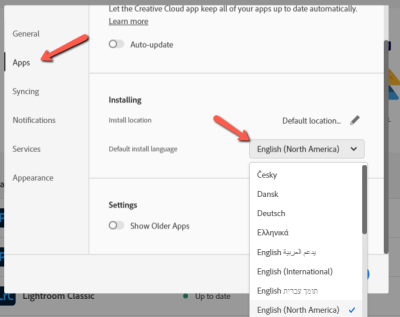If you’re someone who loves creating personal projects, whether it’s a family photo album, a DIY blog, or just decorating your space, you’ve probably come across Shutterstock. But what exactly is Shutterstock, and how does their image licensing work? Basically,
Factors Influencing Shutterstock Image Prices for Personal Use
When it comes to pricing Shutterstock images for personal projects, several factors come into play. First off, the type of license matters a lot. Shutterstock offers different licensing options—standard and enhanced. For most personal uses, the standard license is sufficient, and it’s generally more affordable. However, if you need higher resolution, or plan to print large posters, an enhanced license might be necessary, which increases the cost.
Next, the resolution and size of the image play a significant role. Larger, high-resolution images tend to be more expensive because they offer more flexibility and quality for printing or high-quality displays. Conversely, smaller images or those with lower resolution are cheaper but might not suit all personal projects.
Another key factor is whether the image is part of a subscription plan or available for one-time purchase. Shutterstock offers various subscription packages—like monthly or annual plans—that allow you to download a set number of images at a fixed rate. If you only need a handful of images, a pay-per-image option might be more cost-effective. Subscriptions often lower the average cost per image, making it more budget-friendly for frequent users.
The image’s popularity and licensing restrictions can also influence price. Popular images or those with exclusive licensing rights might be priced higher because of their demand or limited availability. Additionally, some images may have restrictions on how they can be used, which can affect the licensing cost.
Lastly, remember that Shutterstock regularly updates its pricing and offers discounts or promotions, especially for new users or bulk purchases. So, if you’re planning a project and want to keep costs down, it’s worth keeping an eye out for deals or considering a subscription plan that matches your image needs.
How to Purchase Shutterstock Images for Personal Projects
Getting your hands on Shutterstock images for your personal projects is pretty straightforward, but it’s good to know the steps so you can navigate the process smoothly. Whether you’re creating a personal blog, designing a custom gift, or working on a scrapbook, here’s what you need to do.
First, head over to the Shutterstock website. Use the search bar to find the perfect image by typing in relevant keywords. You’ll see a wide array of options, so take your time to browse. You can filter results by orientation, color, image type, and more to narrow down your choices.
Once you find an image you like, click on it to view more details. Here, you’ll see licensing options, pricing, and download buttons. For personal use, Shutterstock offers various licensing plans, typically through a subscription or on-demand image packs. Choose the plan that fits your needs best. If you only need a few images, the on-demand image pack might be more cost-effective. For frequent image users, a subscription plan could save you money in the long run.
After selecting your plan, you’ll need to create an account or log in if you already have one. This step is necessary to complete your purchase and manage your licenses. Once logged in, proceed to checkout, where you’ll review your order, enter payment details, and finalize the purchase.
After payment, you’ll be able to download the image(s) directly from your dashboard. Make sure to download the highest resolution available for your personal projects to ensure the best quality. Remember, even for personal use, you’re bound by the licensing agreement, so avoid using images in commercial contexts unless you upgrade your license.
It’s as simple as that! Just keep in mind that Shutterstock’s licensing terms are designed to protect both creators and users, so always double-check the license type before using an image. That way, you’ll stay within legal bounds and enjoy your creative projects without worries.
Cost Comparison of Shutterstock Image Licenses
Understanding the different costs associated with Shutterstock licenses can help you make smarter choices, especially if you plan to use images regularly for personal projects. Shutterstock primarily offers two licensing options: Standard License and Enhanced License. Let’s break down what each entails and how much they typically cost.
Standard License
This is the most common license and suitable for most personal projects like blogs, social media posts, presentations, or personal prints. It allows you to use the image in a wide range of contexts but with some limitations on distribution and print runs.
| License Type | Cost | Usage Limits |
|---|---|---|
| Subscription Plan | Starting at around $29/month (for 10 images per month) | Up to 500,000 copies or views, personal or commercial |
| On-Demand Pack | Approximately $10-$50 per image, depending on resolution and size | Similar usage limits as subscription, but pay-as-you-go |
Enhanced License
This license is more suited for projects where you might need to print larger quantities, create merchandise, or use the images in a way that could generate revenue. It’s more expensive but offers broader rights and fewer restrictions.
| License Type | Cost | Usage Limits |
|---|---|---|
| Enhanced License | Typically starts at around $199 per image or higher, depending on size and resolution | Unlimited copies, merchandise, and use in products for sale |
For most personal projects, the Standard License provides ample rights at a much lower cost. If your project involves printing large posters, creating products for sale, or extensive distribution, then the Enhanced License might be worth the investment.
In summary, Shutterstock’s pricing model is flexible enough to cater to different needs and budgets. If you’re just doing personal projects, sticking with the Standard License—via subscription or on-demand—is usually the most economical choice. Always read the license details carefully to ensure you’re compliant with Shutterstock’s terms, so you can enjoy your creative endeavors without any hiccups!
Tips for Saving Money When Buying Shutterstock Images
Let’s be honest—buying images can add up quickly, especially if you’re a regular user. But don’t worry! There are several smart ways to cut costs without sacrificing quality. Here are some practical tips to help you save money when purchasing Shutterstock images for personal use:
1. Use Subscription Plans
Shutterstock offers subscription plans that give you a set number of images per month at a significantly reduced rate compared to on-demand purchases. If you know you’ll need multiple images over time, this can be a real money-saver. Just pick a plan that matches your typical usage, and you’ll get better value for your money.
2. Opt for Image Packs
Image packs are another cost-effective option, especially if your image needs are sporadic. Buying images in bulk often comes with discounts, so if you have a handful of images to buy, check out their pack deals instead of individual licenses.
3. Take Advantage of Free Resources and Promotions
While Shutterstock is primarily paid, they sometimes run promotions or offer free images for limited times. Keep an eye on their website or subscribe to their newsletter to stay updated. Additionally, Shutterstock offers free images periodically—these can be a great resource for personal projects without spending a dime.
4. Use the Correct License Type
Make sure you’re selecting the right license for your needs. Personal use typically requires a standard license, which is more affordable. Avoid upgrading to extended licenses unless absolutely necessary, as they come with higher costs. Properly understanding what you need can prevent unnecessary expenses.
5. Plan Your Image Usage
Before purchasing, plan your project thoroughly. Combining multiple needs into a single purchase or choosing images that fit multiple purposes can reduce the number of licenses you need to buy. This way, you’re making the most out of each purchase and saving money in the long run.
6. Consider Alternative Resources
If budget is a concern, explore free stock photo websites like Unsplash, Pexels, or Pixabay. While they don’t offer Shutterstock’s extensive library, you can often find high-quality images suitable for personal use without any cost. Just be sure to check licensing terms to ensure they’re appropriate for your project.
Conclusion and Final Recommendations
Understanding Shutterstock’s pricing structure for personal use can seem complicated at first, but with a little planning, you can make smarter choices that save you money. Remember, the key is to evaluate your needs carefully, choose the right licensing options, and take advantage of plans and promotions whenever possible.
To wrap things up, here are some final tips:
- Assess your image needs before purchasing—buy only what you need.
- Stay informed about deals and free resources to maximize savings.
- Use subscription plans or bulk packs for regular projects.
- Always select the appropriate license to avoid extra costs or legal issues.
- Explore free alternatives when suitable, especially for personal projects.
By following these recommendations, you can enjoy high-quality images from Shutterstock without breaking the bank. Happy creating!


